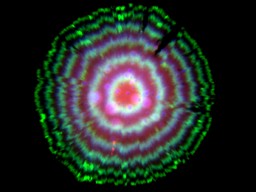|
CPM SeminarSynthetic oscillators as toy models for biological gene circuits: engineering, quantitative analysis and applicationsLaurent Potvin-TrottierConcordia University
Engineering synthetic biological systems holds the potential for valuable applications, ranging from environmental remediation to biomedicine. It can also deepen our fundamental understanding of natural phenomena, by building gene circuits and biological systems from the bottom up for example. Synthetic gene circuits are compelling toy models for biological gene circuits, as we know all their components as well as their interactions. These circuits have been engineered to perform a variety of useful tasks, but despite being made from well-characterized biological components, their precision and robustness are usually much lower than their natural counterparts. Our hypothesis for this difference is that synthetic circuits have so far been designed mostly without accounting for the inherent stochastic gene expression in living cells. To demonstrate this, I will show how harnessing principles from stochastic theory to redesign a classic synthetic oscillator (the repressilator, which helped jump-started the field of synthetic biology) helped produce oscillations that rival those of natural clocks. I will then describe how this motivated us to develop a method for screening dynamical phenotypes, by isolating single cells from our microfluidic device using optical tweezers after time-lapse microscopy. This inspired us to engineer hundreds of oscillators to explore areas that are beyond our current theoretical understanding. Finally, I will showcase applications of synthetic circuits to study natural systems, such as measuring bacterial growth in the gut of live mice, and discuss the biological insights learned by engineering precise synthetic circuits.
Thursday, November 1st 2018, 10:30
Ernest Rutherford Physics Building, R.E. Bell Conference Room (room 103) |